

Context:
The Loadboard is a platform where carriers find freight to keep their trucks full. Initially, Loadsmart had a fixed-rate policy, which limited carriers' ability to negotiate rates directly on the platform. However, research showed that carriers valued negotiation as a key part of their real-world operations.
Project Overview
Objective:
To introduce a bidding feature that allows carriers to negotiate rates, increasing engagement and bookings on the platform.
Duration:
2020 - 2022
My Role:
Conducted user research and competitive analysis to identify carrier needs.
Designed the bidding and counteroffer flows, ensuring a seamless user experience.
Collaborated with product managers and developers to implement the features.
Key Contributions:
Introduced the Bid Button and Counteroffer Flow, which became key features of the Loadboard.
Designed the Bids Dashboard in Alice to streamline bid management for internal teams.
Advocated for real-time notifications and feedback loops to improve carrier engagement.
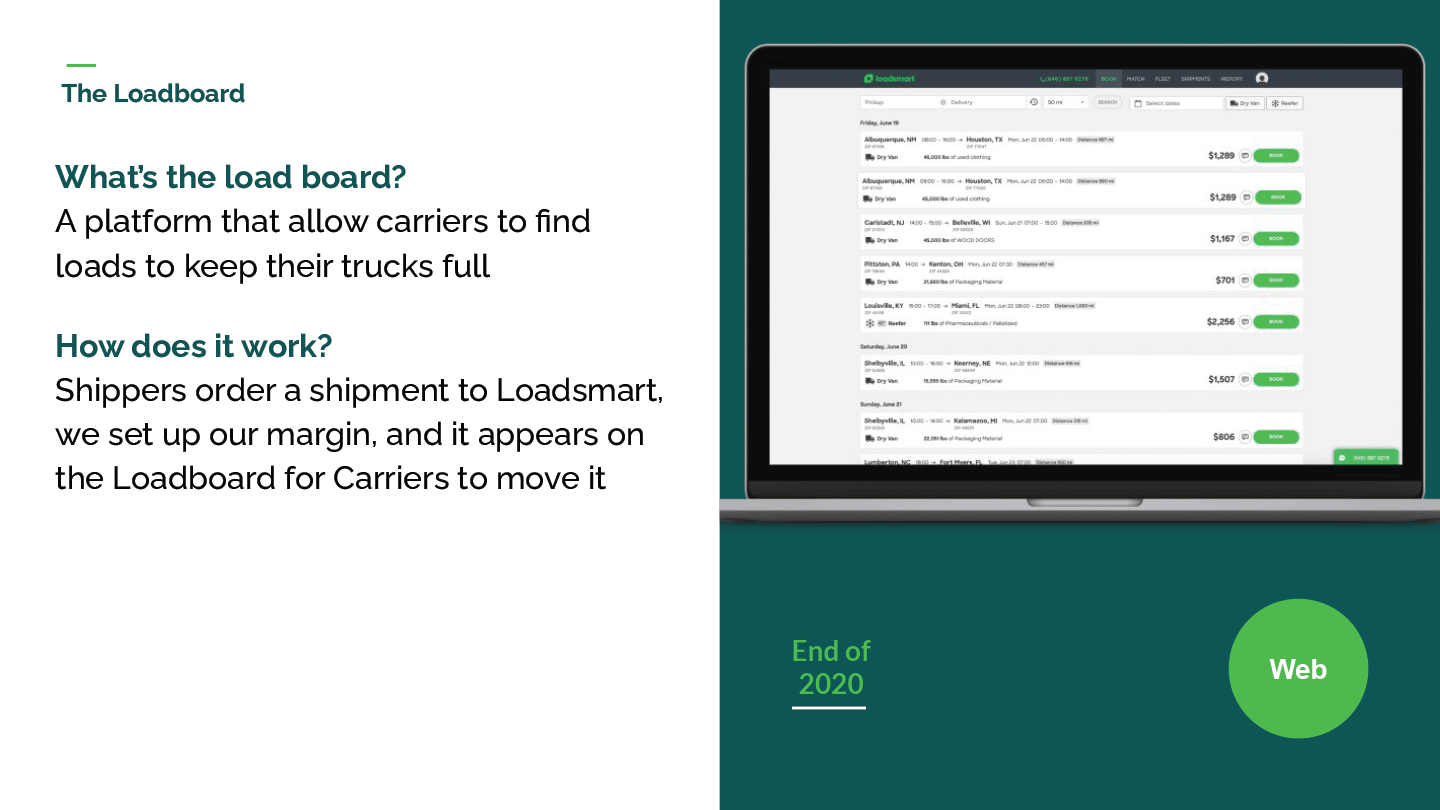

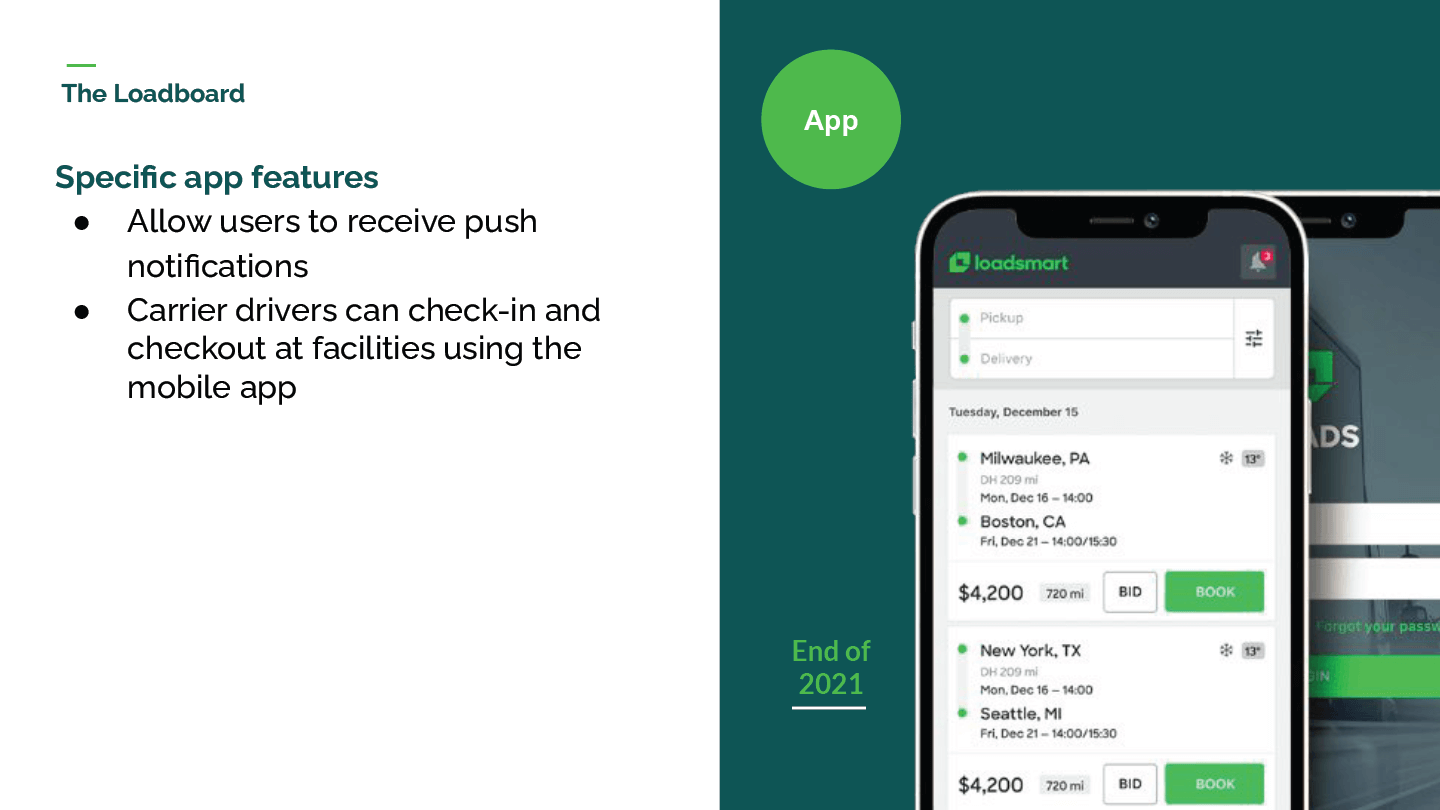

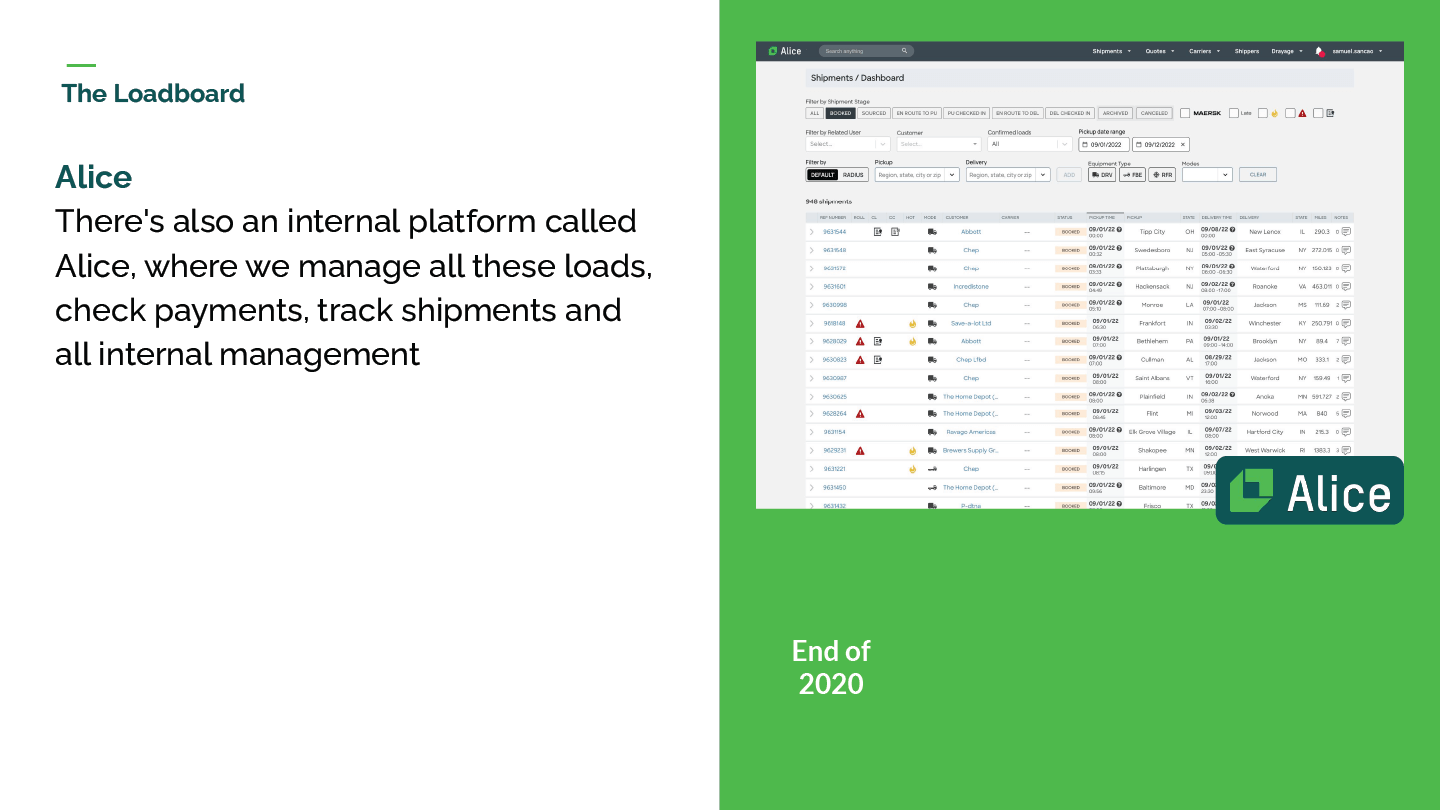

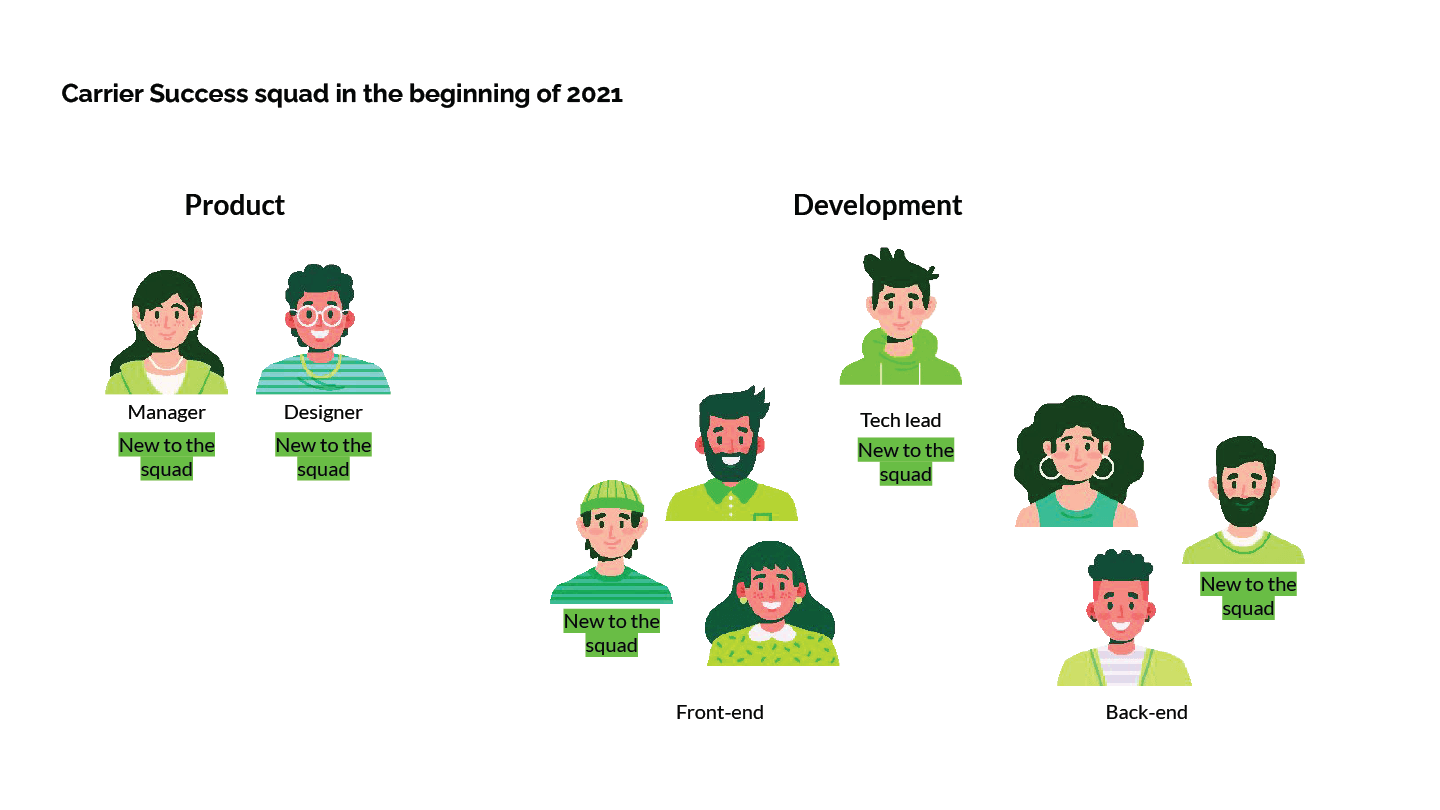

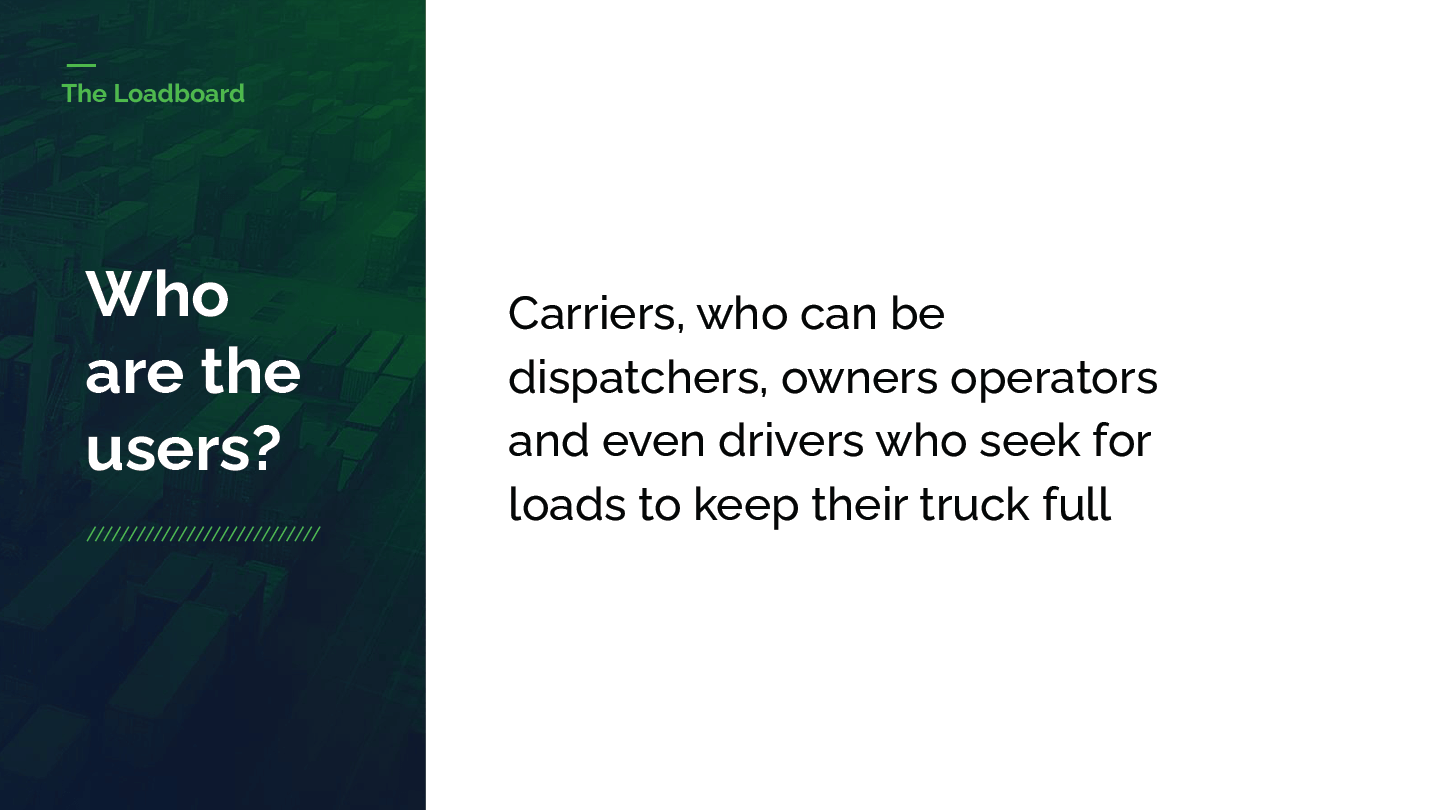

Fixed-Rate Policy:
Initially, LS operated with fixed rates, which didn’t align with how carriers typically negotiate in the real market. This led to lower engagement and missed opportunities for both carriers and LS.
The Problem
Carrier Feedback:
Research revealed that carriers missed the ability to negotiate rates, as it’s a common practice in the industry. They wanted more flexibility and control over the rates they were offered.
Key Challenges:
Low engagement from carriers due to the lack of negotiation options.
Carriers often abandoned the platform because they couldn’t get the rates they desired.
Limited feedback loops for carriers when their bids were rejected or timed out.
Research and Discovery:
Conducted surveys and user interviews to understand carrier needs and pain points.
Analyzed data on carrier behavior, including bid acceptance rates and engagement metrics.
Identified that 26.7% of carriers abandoned the platform due to low rates, and 16.7% left because their bids were not accepted.
Process
Hypothesis:
Allowing carriers to negotiate rates would increase engagement and bookings on the platform.
Experimentation:
Introduced a Bid Button on the Loadboard, enabling carriers to submit their desired rates.
Sales representatives received bids via Slack and could accept or deny them.
Monitored engagement metrics and carrier behavior during the experiment.
Results of the Experiment:
Increased Engagement: Carriers who placed bids booked 20% more loads compared to those who didn’t.
Positive Feedback: Carriers appreciated the ability to negotiate, which aligned with their real-world practices.
Room for Improvement: The Slack-based system was limited and didn’t allow for counteroffers or real-time feedback.
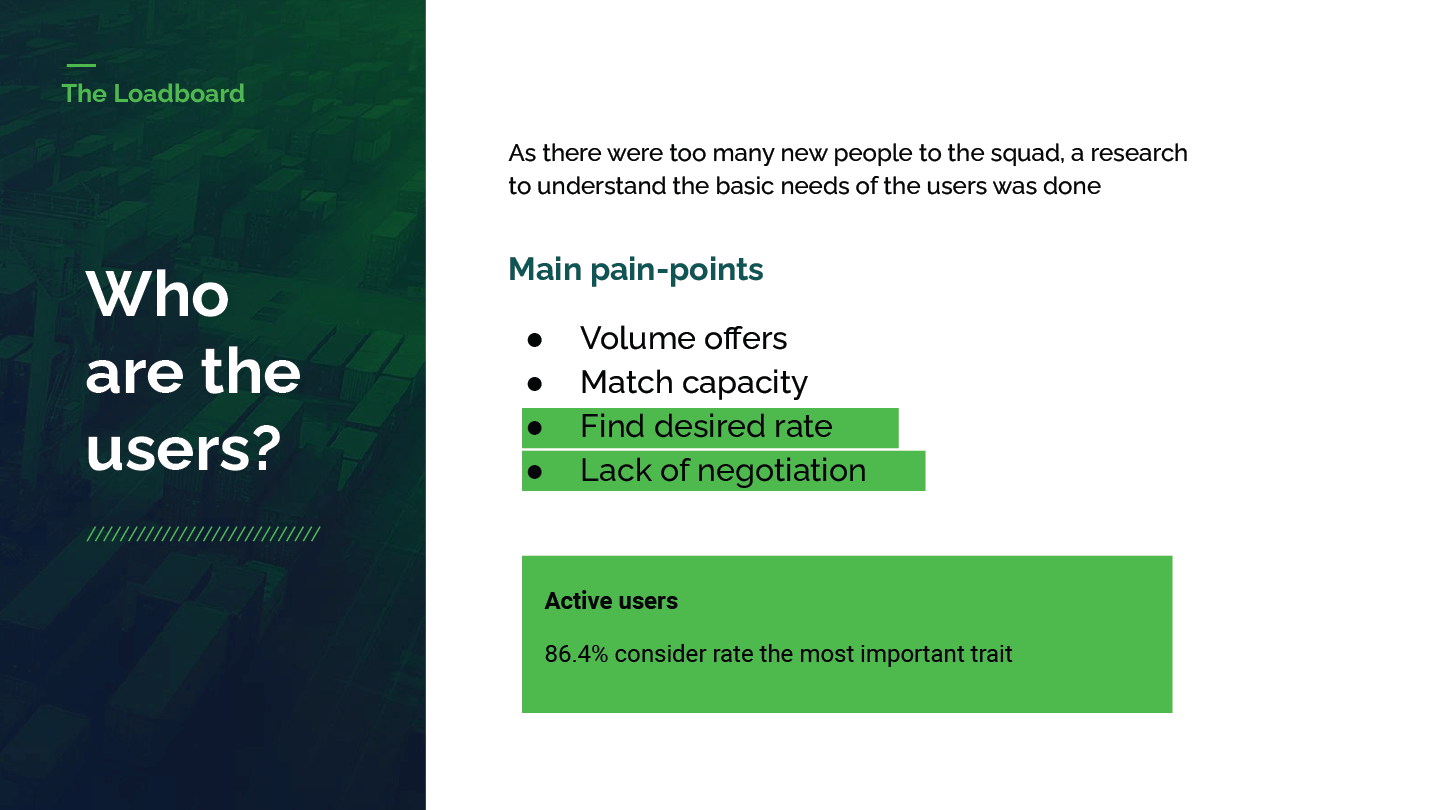

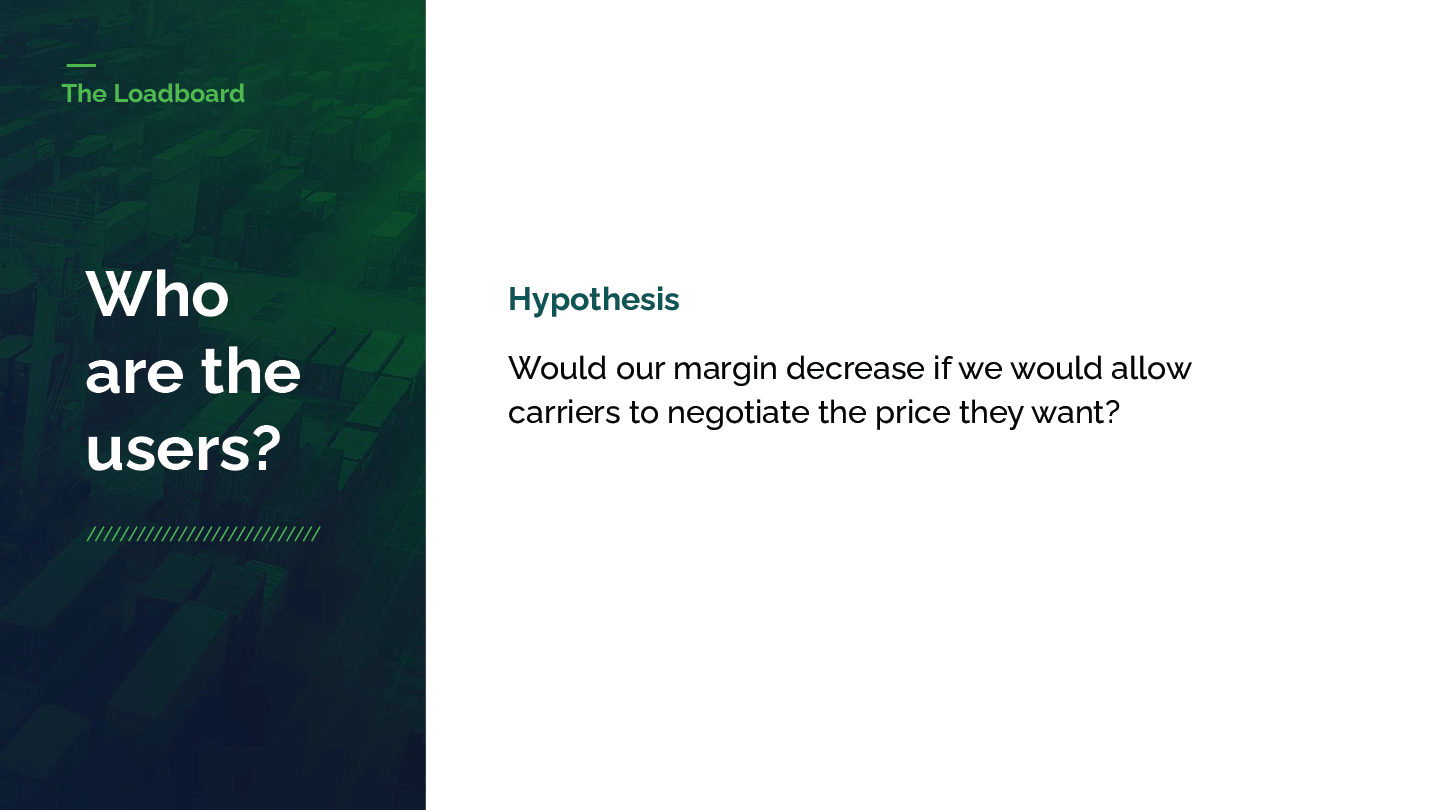

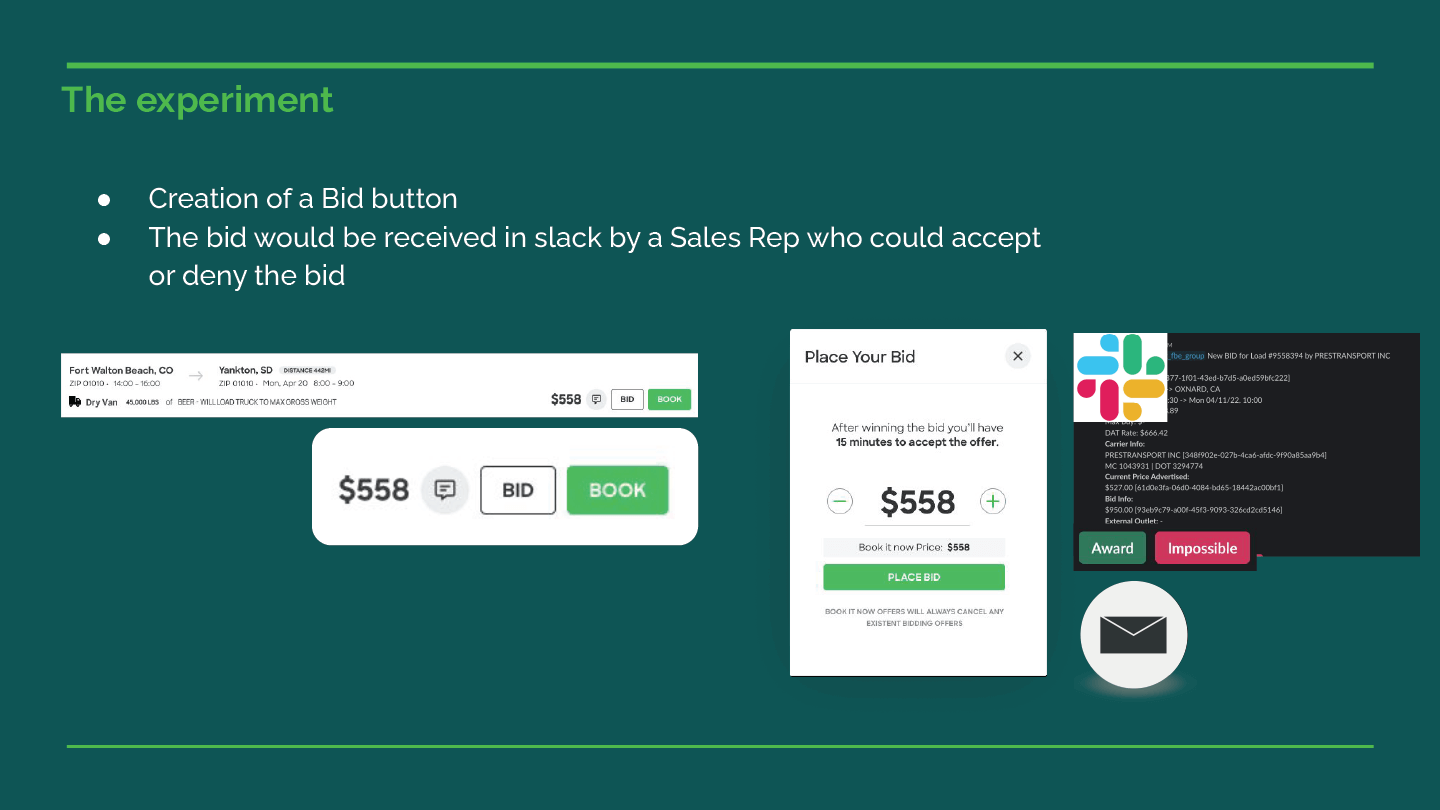

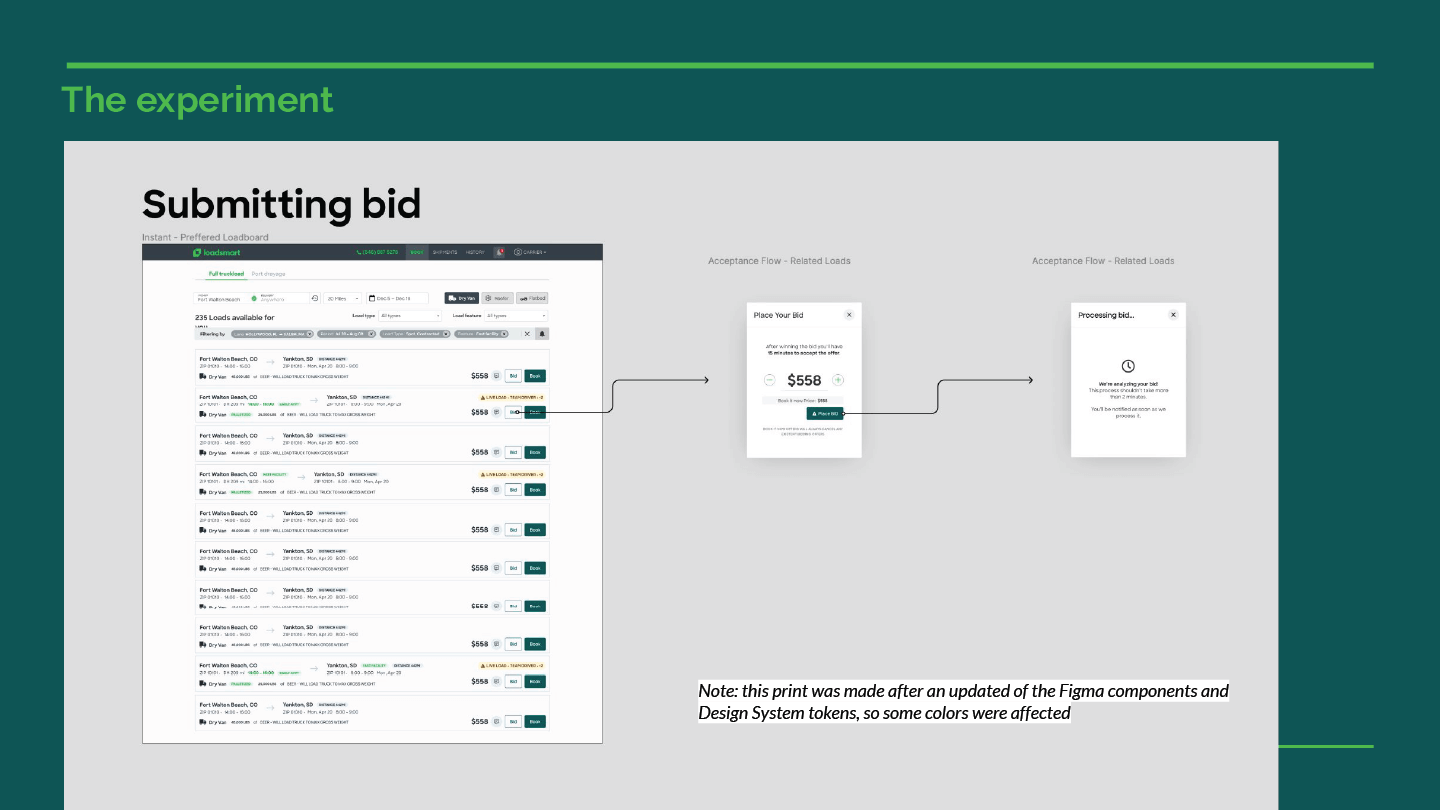

Improved User Experience:
Highlighted Pending Bids: Added visual cues and countdown timers for pending bids on the Loadboard.
Automated Feedback: Sent emails with related loads to carriers whose bids were rejected, improving retention and engagement.
Solution
Real-Time Negotiation Features:
Push Notifications: Carriers received real-time notifications when their bids were accepted, rejected, or about to expire.
Counteroffer Flow: Introduced a counteroffer system where carriers and sales reps could negotiate rates directly on the platform.
Bids Dashboard: Created a dedicated dashboard in Alice (internal platform) to manage bids and counteroffers efficiently.
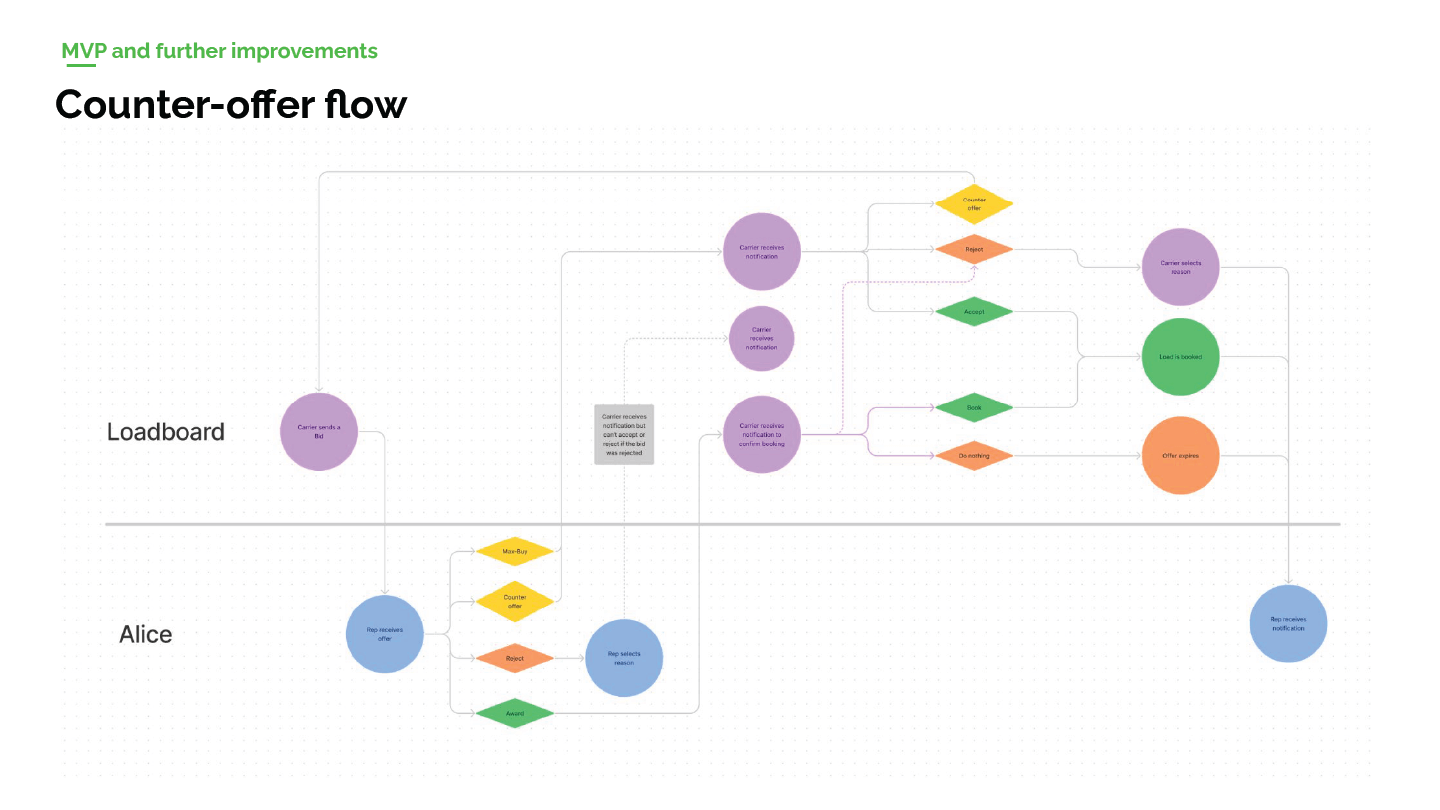

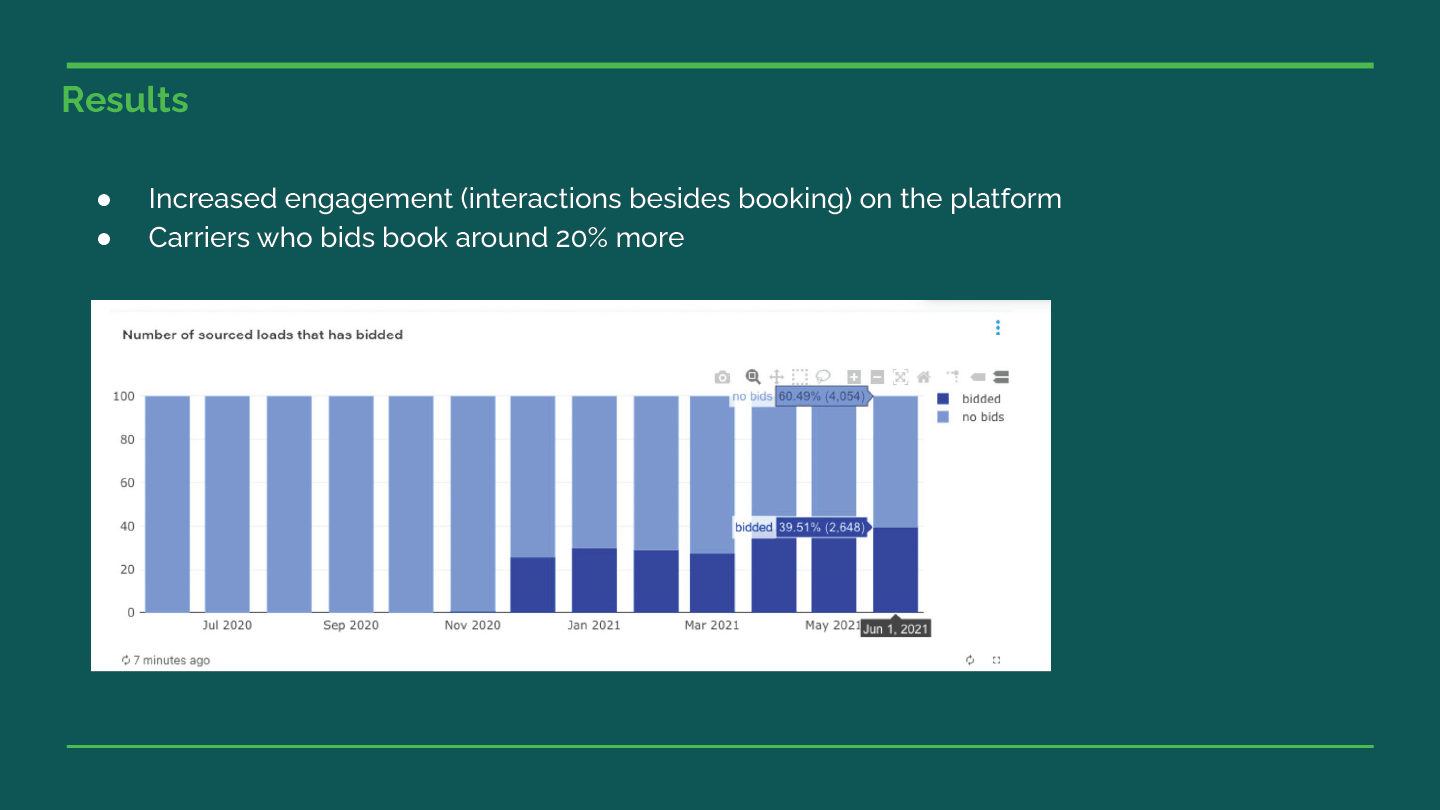

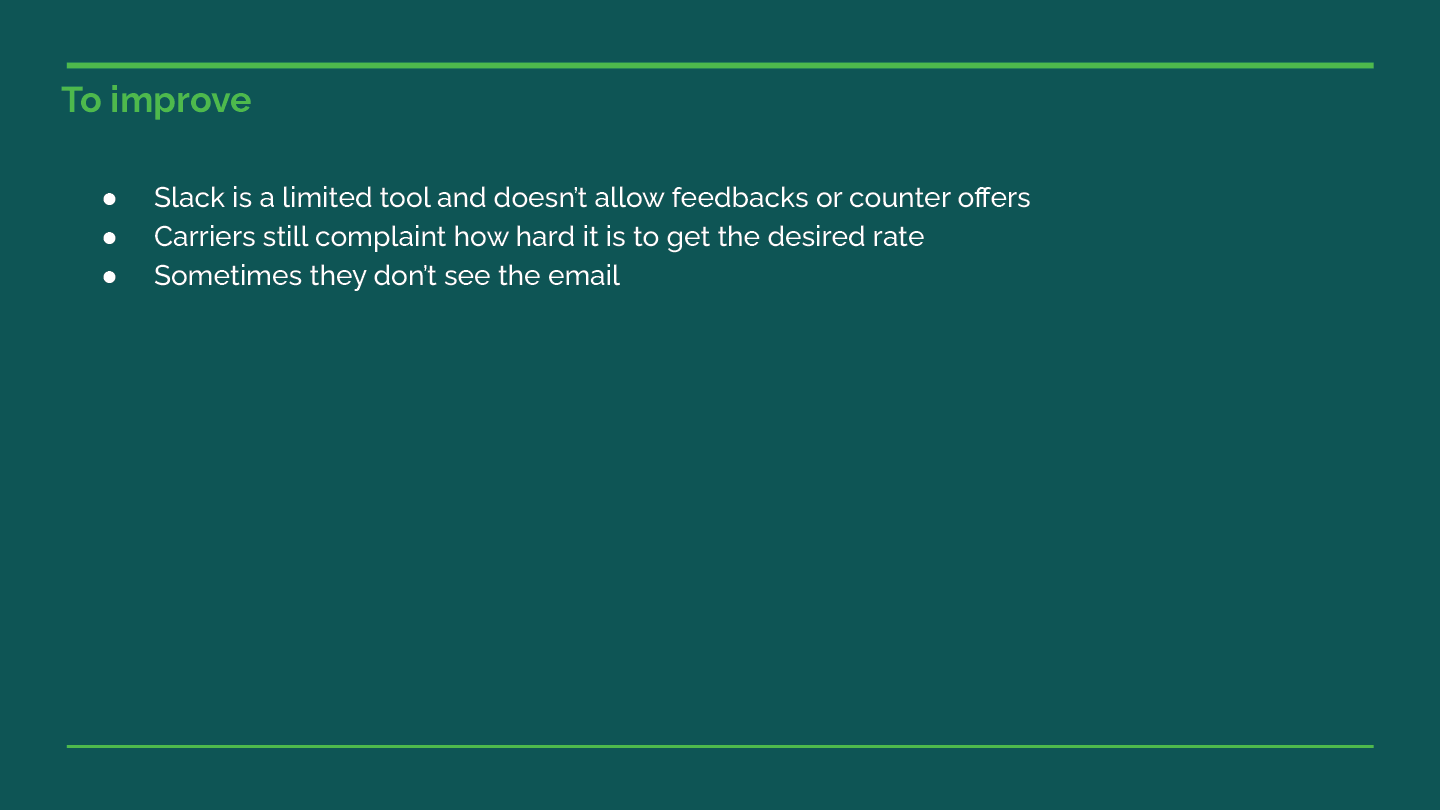

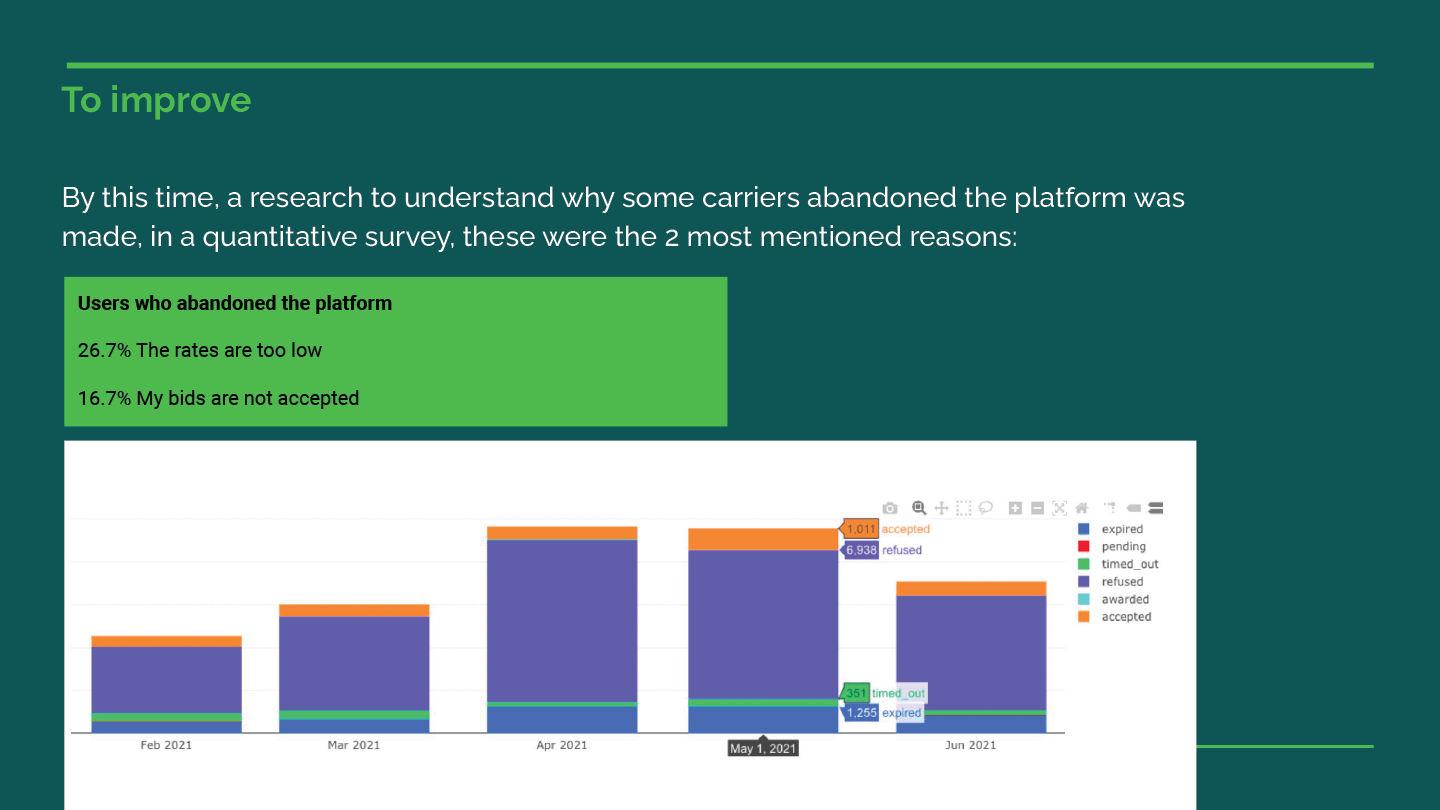

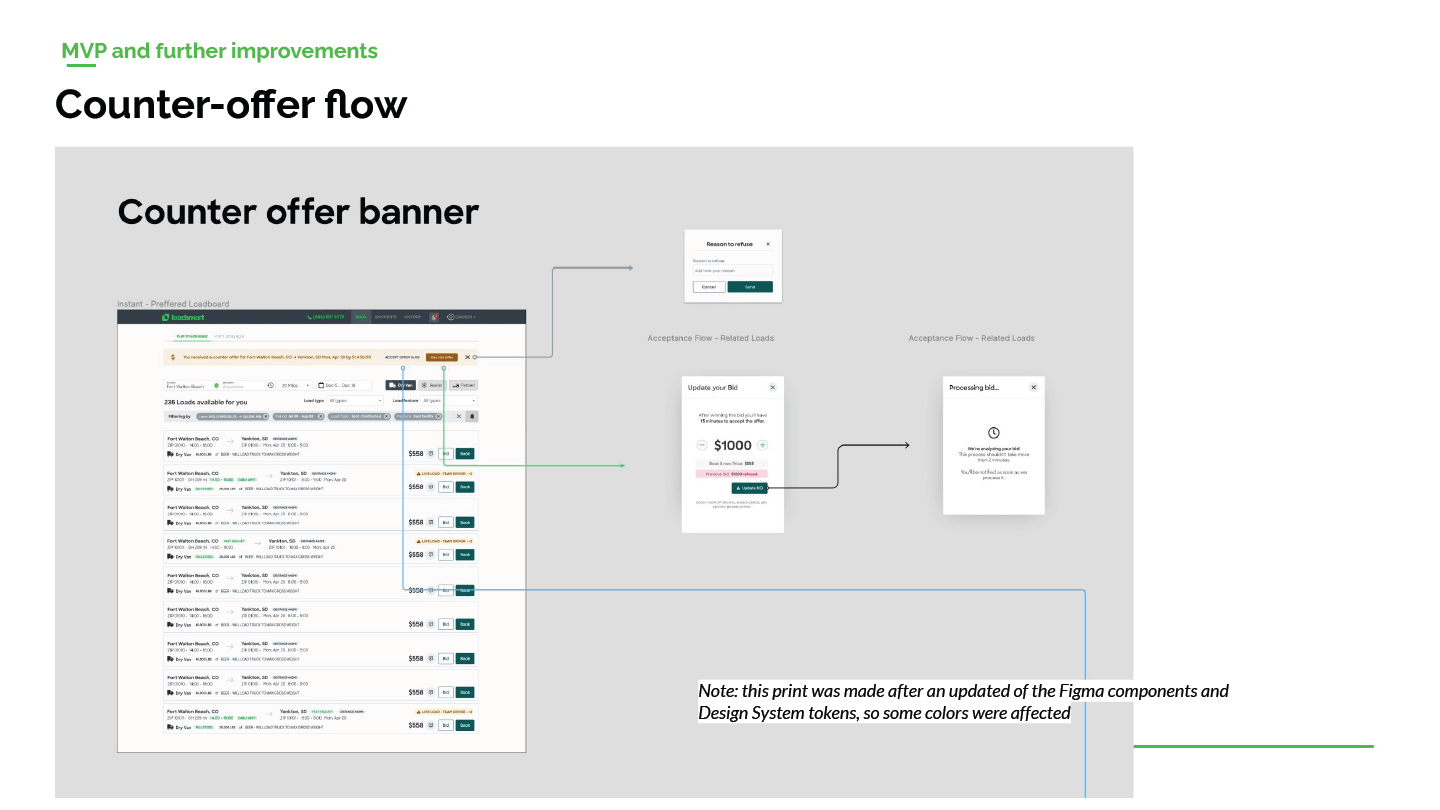

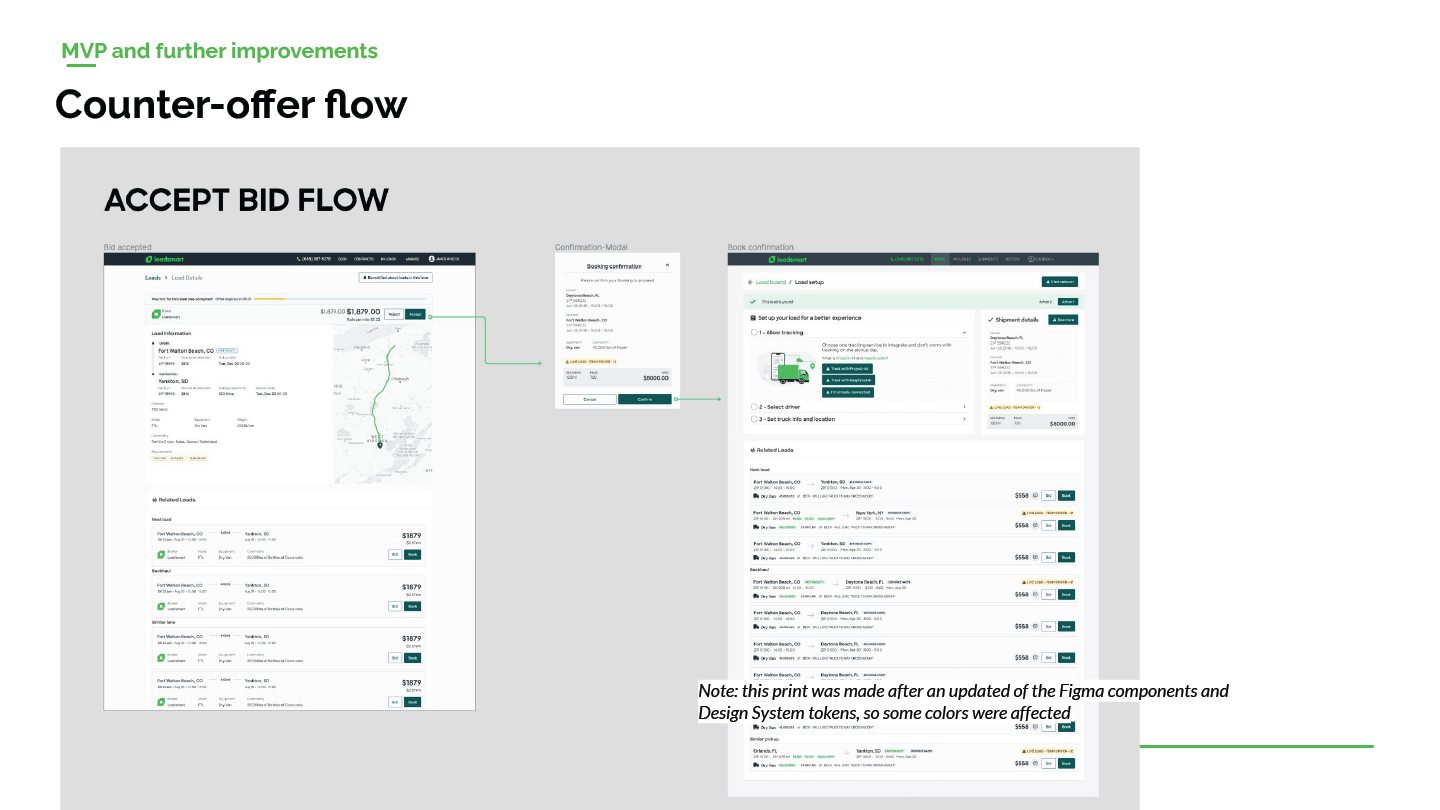

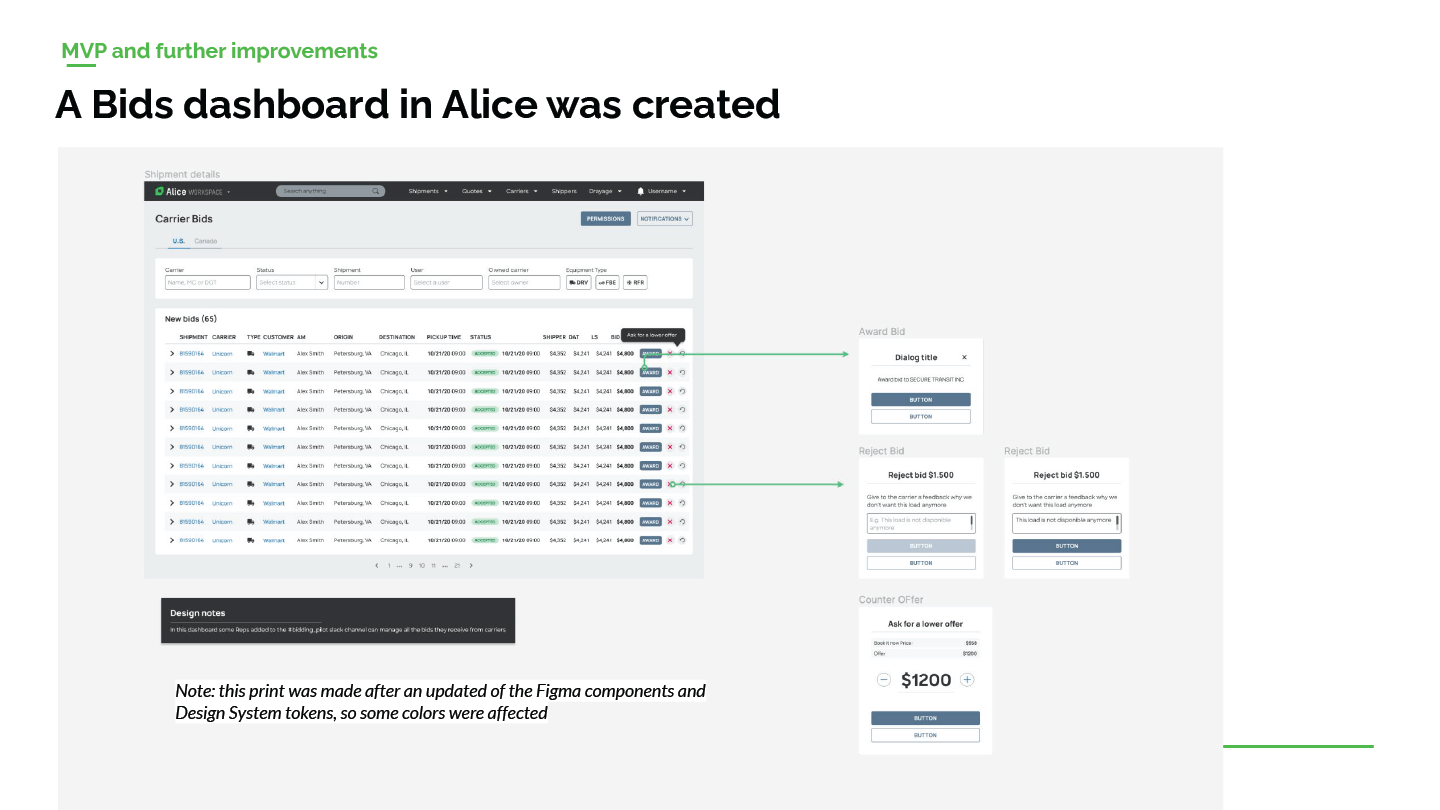

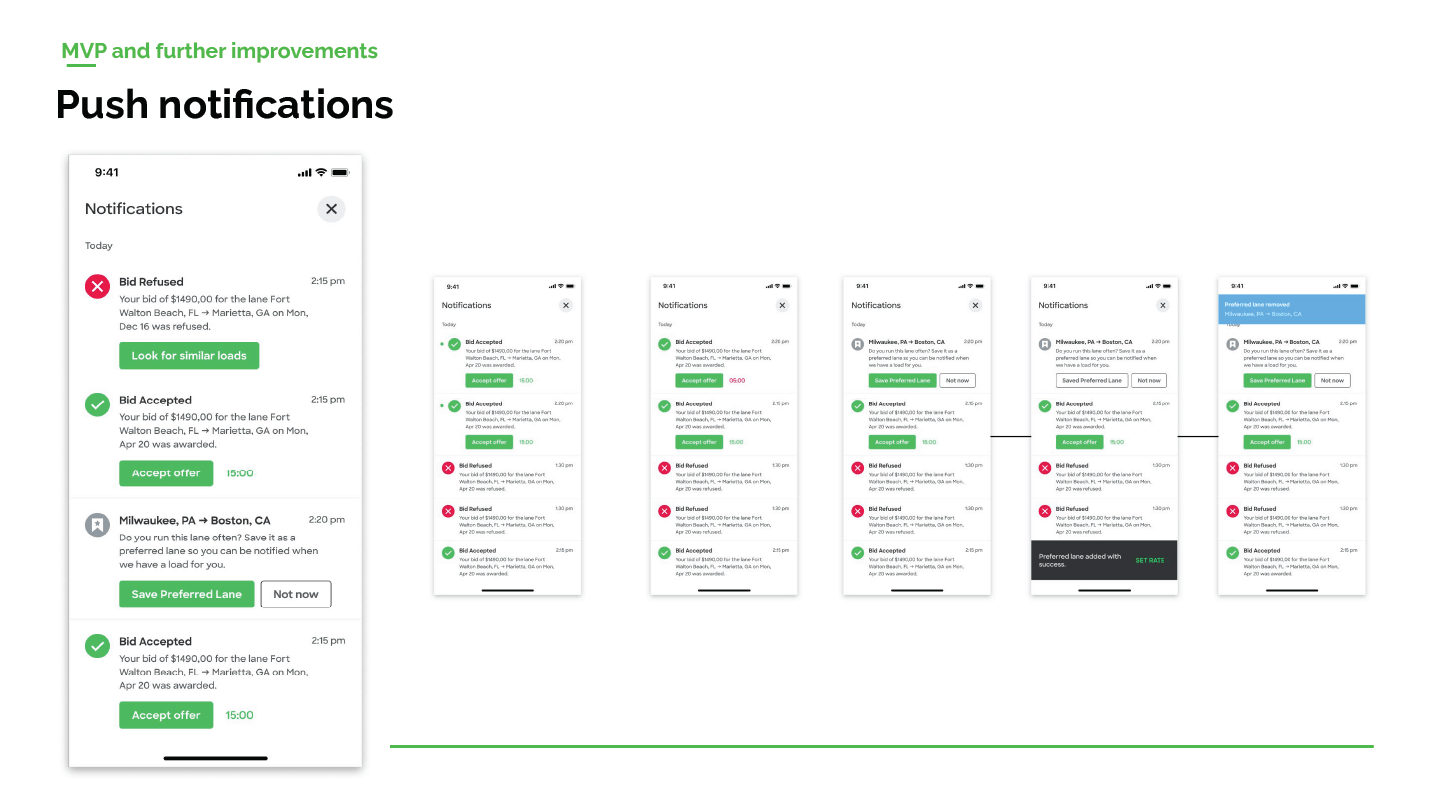

Increased Engagement:
Carriers who placed bids were 255% more engaged with the platform compared to non-bidding carriers.
The number of sourced loads with bids increased significantly over time.
Outcome
Higher Bookings:
Carriers who negotiated rates booked 20% more loads, even if they bid on multiple loads.
The platform saw a 148.89% increase in booking button clicks after implementing the bidding feature.
Improved Carrier Satisfaction:
Carriers appreciated the ability to negotiate rates, which aligned with their real-world practices.
The platform became more competitive, attracting more carriers and increasing overall usage.
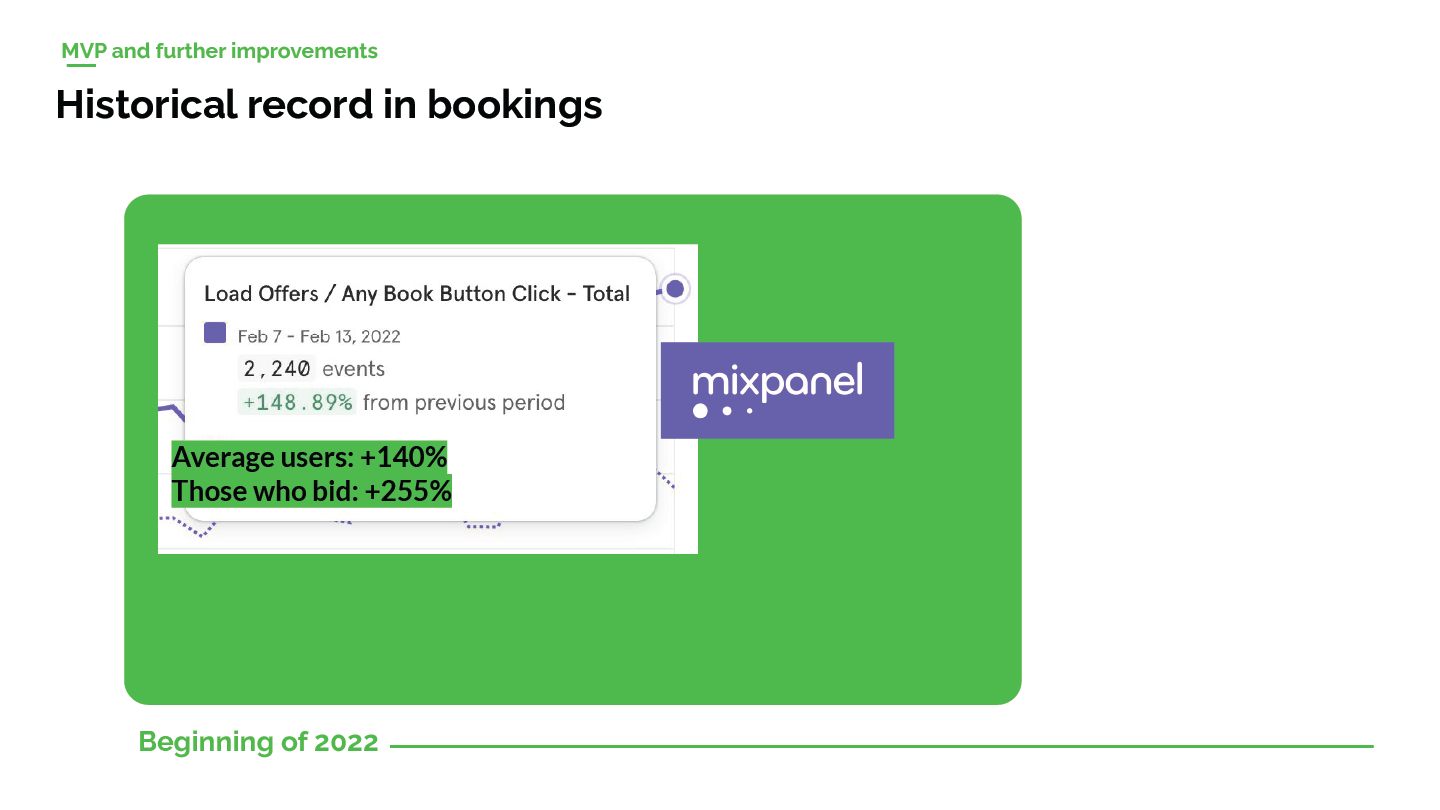

This project reinforced the importance of aligning platform features with real-world user behaviors. By allowing carriers to negotiate rates, we bridged the gap between the digital platform and their traditional practices.
The initial experiment with the Bid Button was a success, but it also highlighted areas for improvement, such as the need for real-time feedback and counteroffers. This led to further enhancements that significantly improved the platform.
By analyzing carrier behavior and engagement metrics, we were able to make informed decisions that drove positive outcomes for both carriers and LS.

